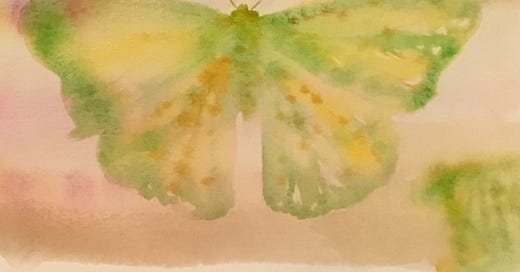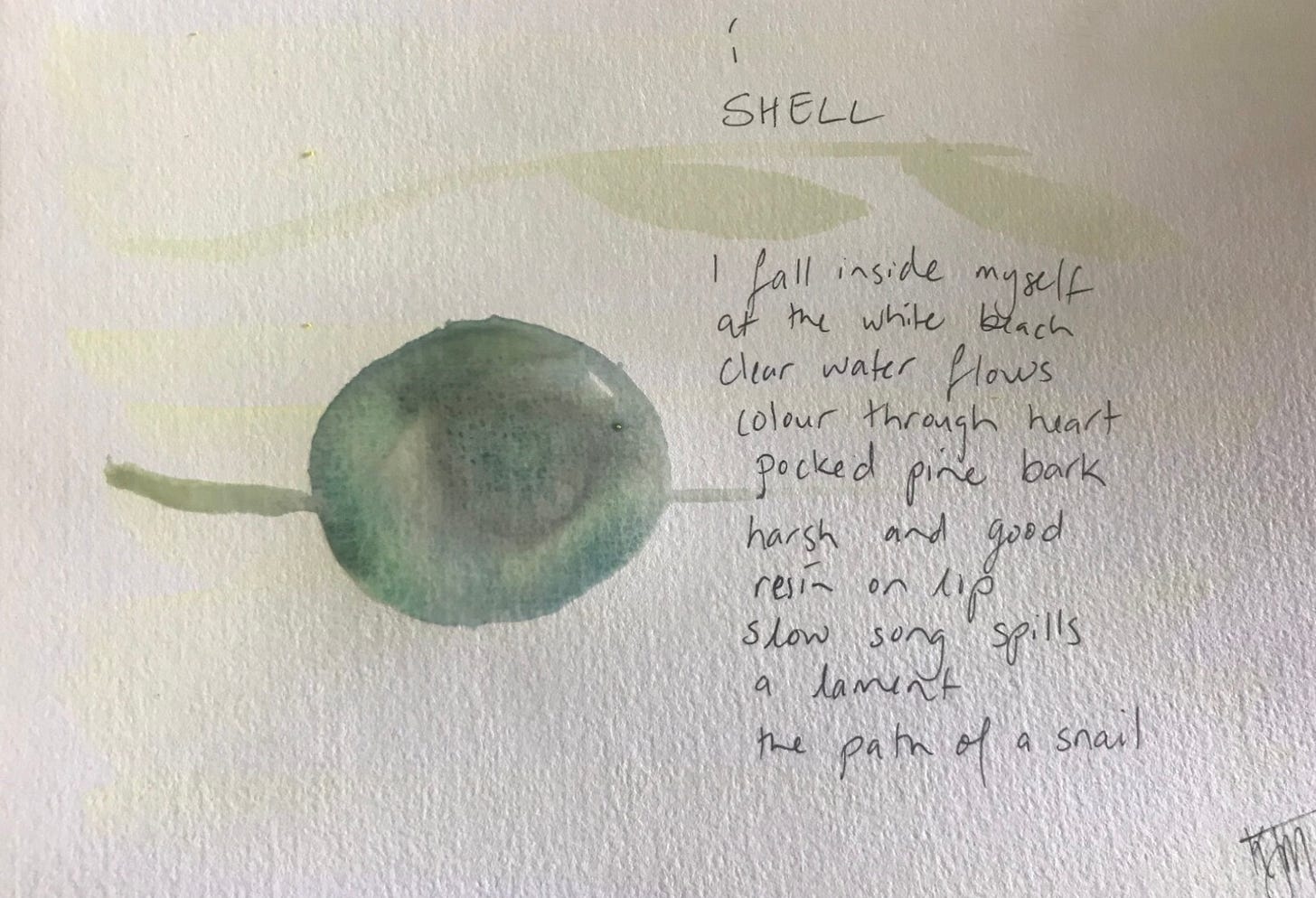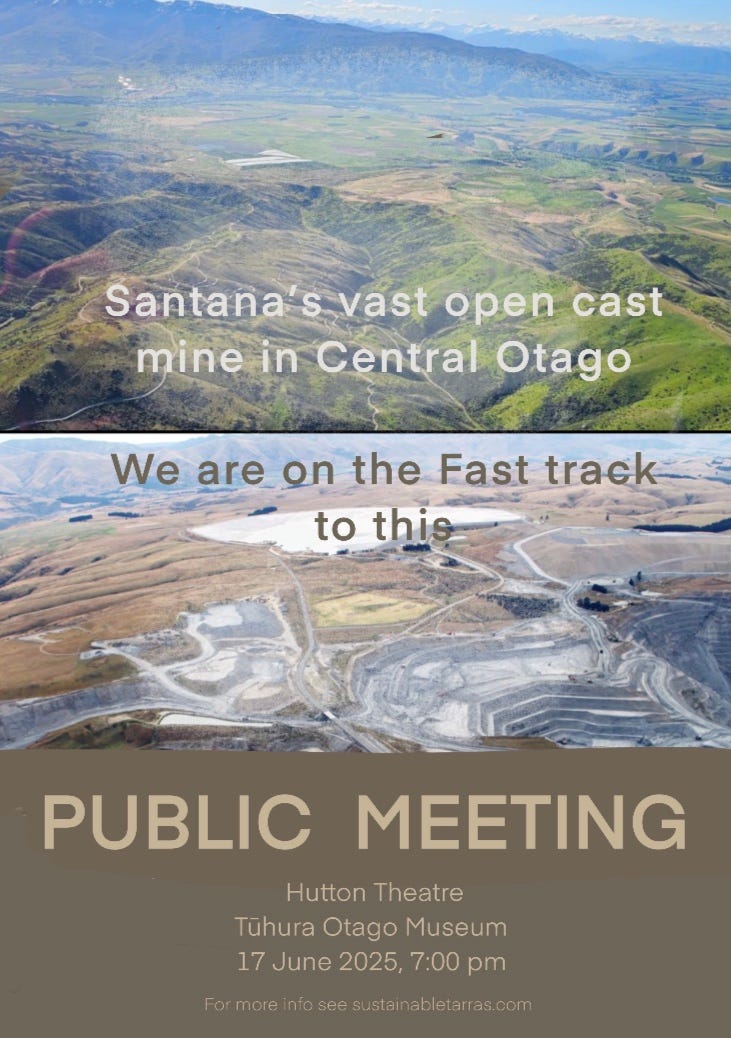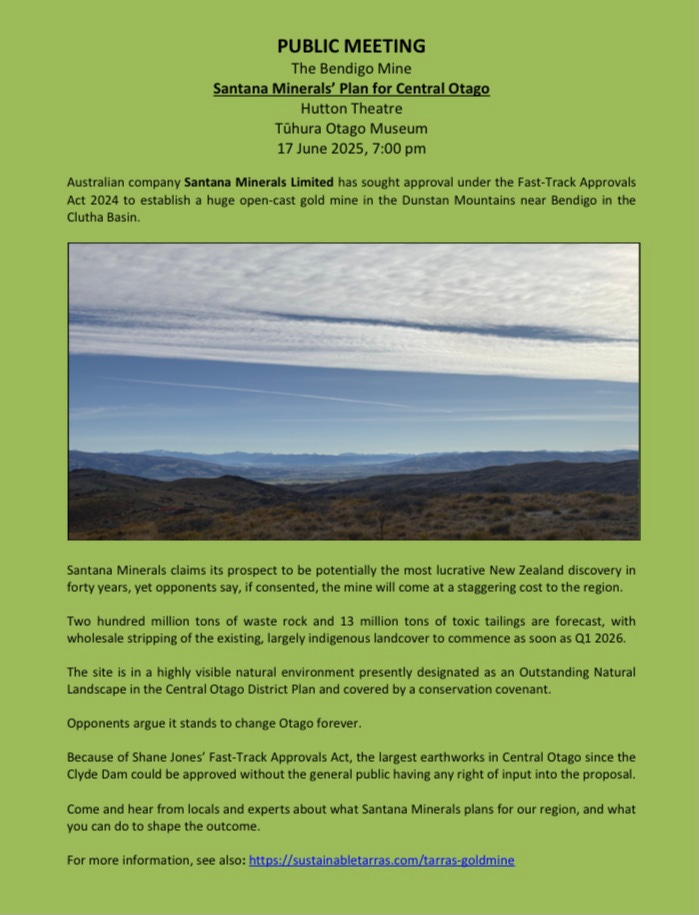The temperature gauge in my car has dropped to three degrees. I’m driving in snow from Middlemarch to Ranfurly. Not a long drive, but tension mounts along my jaw like quick-drawn charcoal lines. My hands ache from gripping the wheel. The sky is crushed organza grey. At Hyde thin snow scatters in a frantic fan across the windscreen, over bowed tussock and rocky hills. The road is a wet-black bending line made darker by edging snow. It’s spilled-ink into rising mounds of white.
George Fairweather Moonlight set out gold prospecting in winter because he had lost everything. I think of him as the worn Coldplay album goes around again in the hum of the car. The dogs rest their heads on two sleeping bags, behind them a bag bulges with emergency food and water. Above Hyde the temperature gauge drops from three to two. Did George Fairweather Moonlight sing as he moved to keep warm? “The light that she left me will everglow.” Losses. Mostly I think about his loneliness.
I have three dogs with me, curled up in the back. One is sick with an infection: so I’m driving to the vet. Part of me likes the wild movement. Slow, but amongst it. Mostly safe. This morning I read
’s post about love in action. Getting medicine for my dog is the best I can manage for this today.At Kokonga slushy ground and gloom from the trees closes in. A small hopeful sign beyond a severe Presbyterian brick building reads ‘garlic,’ and I think about stopping. But if I stop will the temperature then drop to zero? The bark of the willows beside the river is black with streaming snow melt. Bare red-tipped branches reach into an ash grey sky.
The vet sees the dog. She says: he needs a tube of medicine, and that he is mostly okay. We collect the medicine, and a pumpkin from the store so I can make soup later. The soup would be better with garlic, but I still don’t stop at Kokonga on the way back. I keep going, before it drops to zero. One degree. Westerly light plays gold and shadow along the Maniototo Range. Hills have kept me company all the way as I’ve moved, steadying my tension, back-dropping in with a beauty that quiets my worried mind.
Hills speaking.
Home. Fire. In my inbox is a message from a poet about a planned gold mine that will destroy the Dunstan Hills, only a little further down the road from where I’d been today. Gold-digging is planned in Dunstan on a scale quite different to the questing along rivers of prospector George Fairweather Moonlight: the email tells me this is big-time, take-the-mountain-down ruin.
In the 2021, Te Puna o Waiwhetū | Christchurch Art Gallery exhibition: Ralph Hotere: Ātete (to resist), curator Lucy Hammonds wrote, “Throughout the exhibition we are reminded of acts of violence and injustice that have been perpetrated against both people and place. Yet in parallel, we are presented with a view of how art can lead us to stand strong in opposition – E Tū, Kia Ātete.”
I don’t know what I can do to save the Dunstan hills from a ‘Fast-track’ mining proposal. Writing this down feels like a smudge of Ātete, and also like driving quick-slow into overwhelm before the mountain landscape reaches zero. There’s much to make me want to fall into my shell. I hold hard onto the hope that the gentle resistance of art makes a difference.
*
More info about the Dunstan Mountains Mining Plan and Meetings
Flyers that my poet friend sent me to share about the public meeting on Tuesday 17th of June 2025, 7pm at Tūhura Otago Museum, Hutton Theatre.







